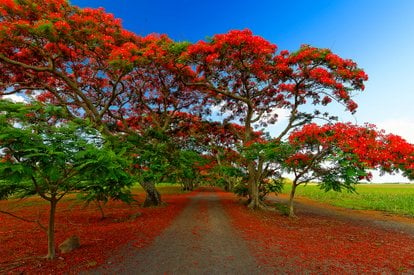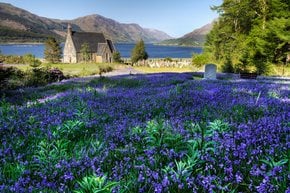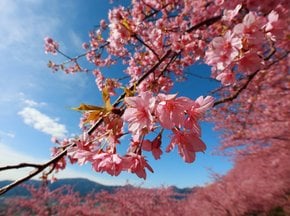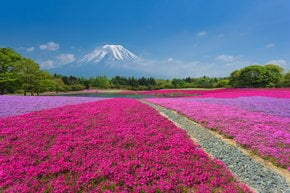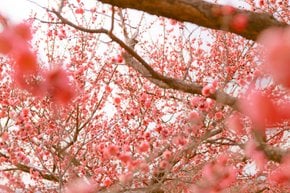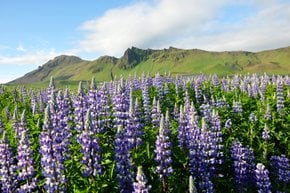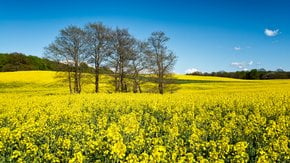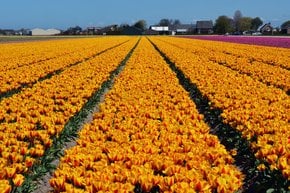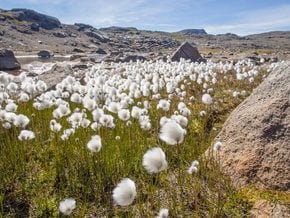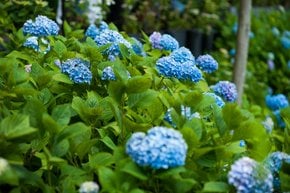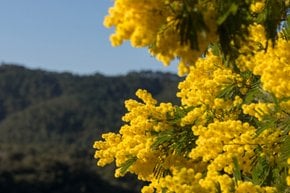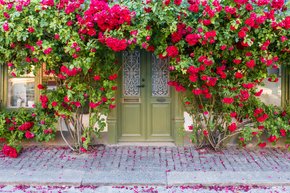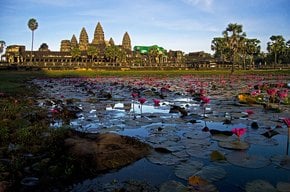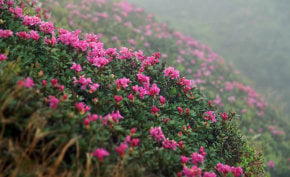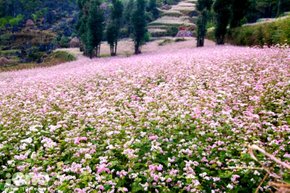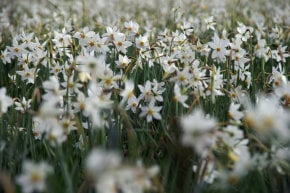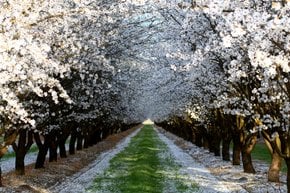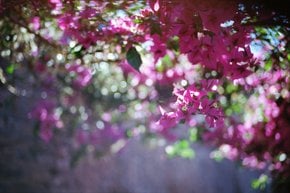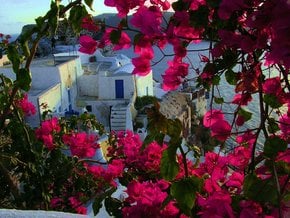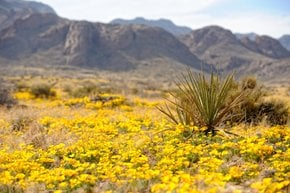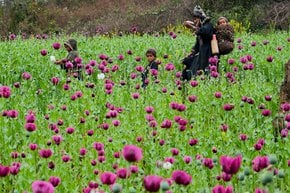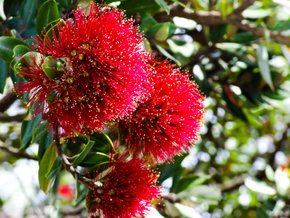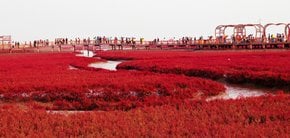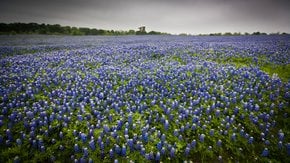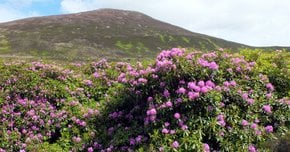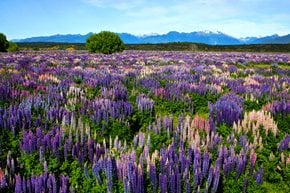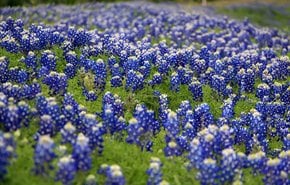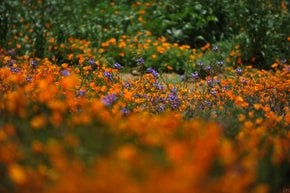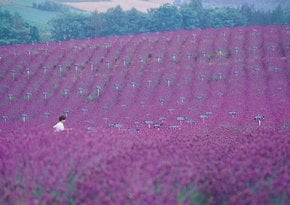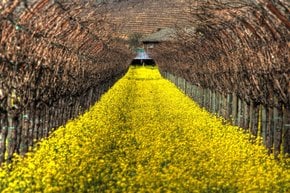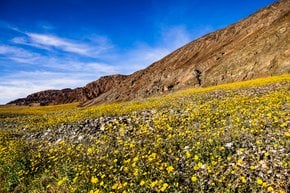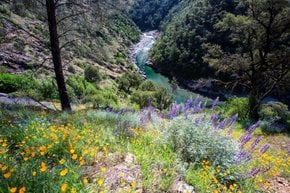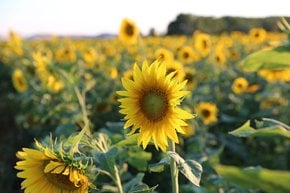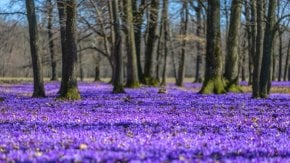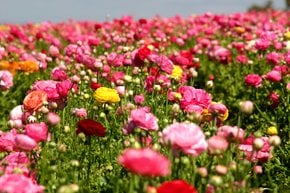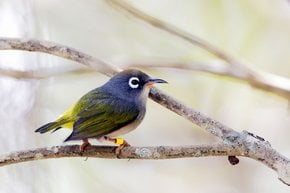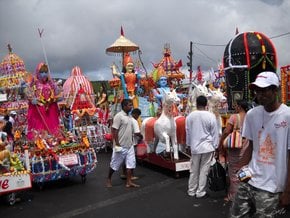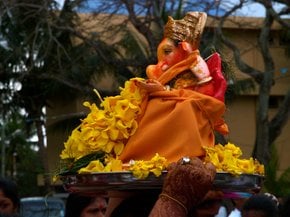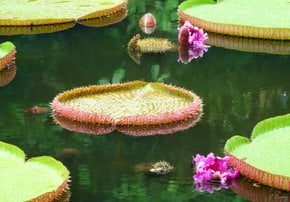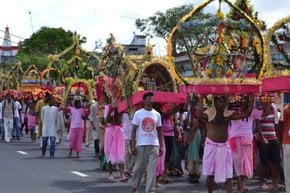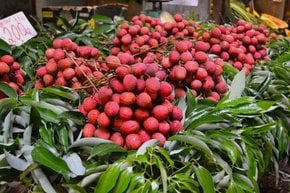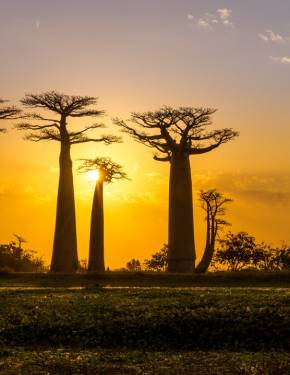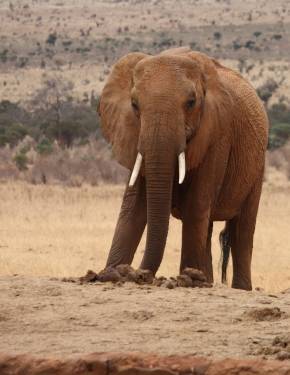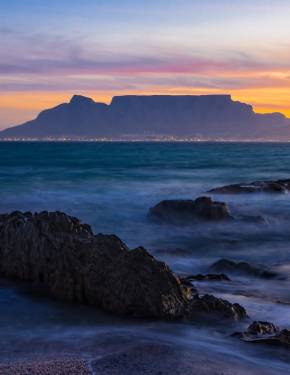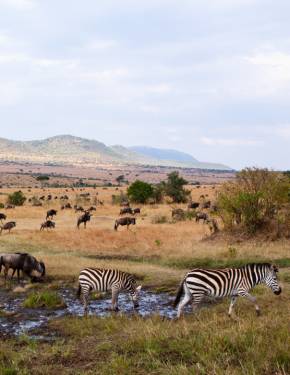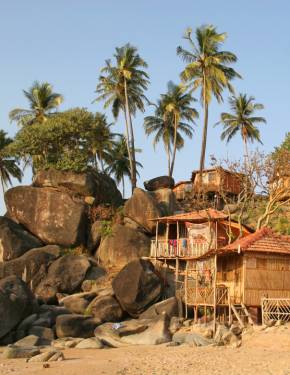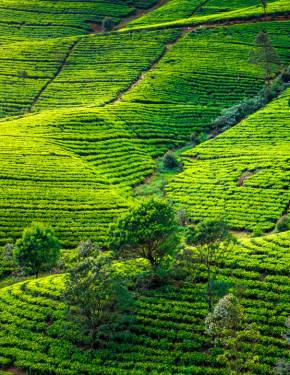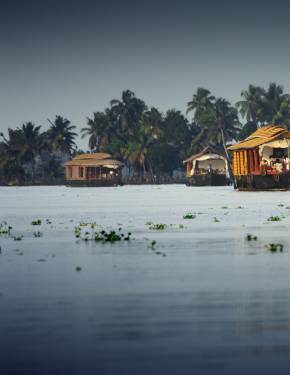Flamboyant Tree Blossom in Mauritius 2025-2026
Observe how the whole of Mauritius dresses in red as the Flamboyant Tree starts to blossom
Best time: November–January
The flamboyant tree (“Delonix regia”), with its vibrant red, orange, and yellow blossoms, transforms Mauritius into a vivid tapestry of colors from November to January. Native to Madagascar and widely embraced in tropical climates, this tree has become a cultural symbol and natural highlight in Mauritius, marking the festive season with its dramatic bloom.
Locations
Flamboyant trees can be found across Mauritius, but some locations are especially renowned for their breathtaking displays:
Cap Malheureux
The surroundings of Notre-Dame Auxiliatrice chapel in Cap Malheureux are adorned with flamboyant trees, making it a popular spot for photography. The vivid blossoms create a stunning contrast against the iconic red-roofed chapel and the azure sea.
Mont Choisy to Pointe aux Cannoniers
The coastal road between Mont Choisy and Pointe aux Cannoniers is lined with flamboyant trees. The route offers an excellent opportunity for leisurely drives or bike rides, with ample chances to capture the beauty of the blooming trees.
Médine and Domaine de Labourdonnais
In the west, the area near the old Médine sugar mill is rich with flamboyant trees. Similarly, the Domaine de Labourdonnais in the north features these trees near its historic sugar mill chimney and La Corbeille shop, providing a picturesque setting.
Belle Mare and Bel Ombre
In Belle Mare, the ruins of an old sugar mill are surrounded by flamboyant trees, adding a unique charm to the area. In the south, near Le Château de Bel Ombre, visitors can enjoy more stunning displays of these vibrant trees.
Marie Reine de la Paix, Port-Louis
At Marie Reine de la Paix, a well-known religious site in Port-Louis, flamboyant trees enhance the serene atmosphere. The blossoms transform the area into a captivating landscape that attracts visitors seeking tranquility and beauty.
Visiting Tips and Accessibility
Most locations featuring flamboyant trees are easily accessible by car. Public transportation options are available to major spots like Port-Louis and Cap Malheureux. Areas like Domaine de Labourdonnais and Le Château de Bel Ombre offer amenities such as cafes and restrooms, making them suitable for family outings. Early mornings or late afternoons provide the best lighting for capturing the vibrant blossoms.
The Cultural Significance of Flamboyant Trees
Locally known as “Bouquet Banane” or the “Yearly Bouquet,” the flamboyant tree’s blooming season coincides with the end-of-year festivities. Many Mauritians affectionately refer to it as the “Bonus Tree” because its flowering aligns with the period when annual bonuses are distributed. This tree has also been nicknamed the “Mauritian Christmas Tree” for its role in heralding the holiday season. Beyond its aesthetic appeal, it is a symbol of joy, community, and resilience, often serving as a backdrop for gatherings and celebrations.
The Botanical and Historical Context
The flamboyant tree, endemic to Madagascar, was introduced to Mauritius in the late 1830s. Initially planted in locations such as Pamplemousses Garden and Port-Louis, the tree thrived in the island’s tropical climate and light soils. It can grow up to 15 meters tall, with fern-like leaves and large, vividly colored flowers. The most common variety in Mauritius features red blossoms, although orange and yellow varieties can occasionally be spotted.

